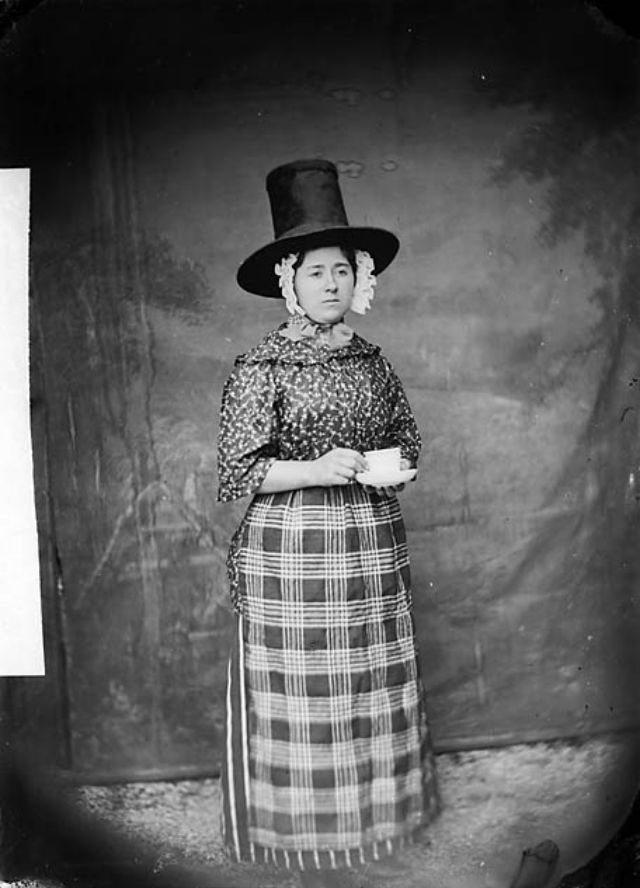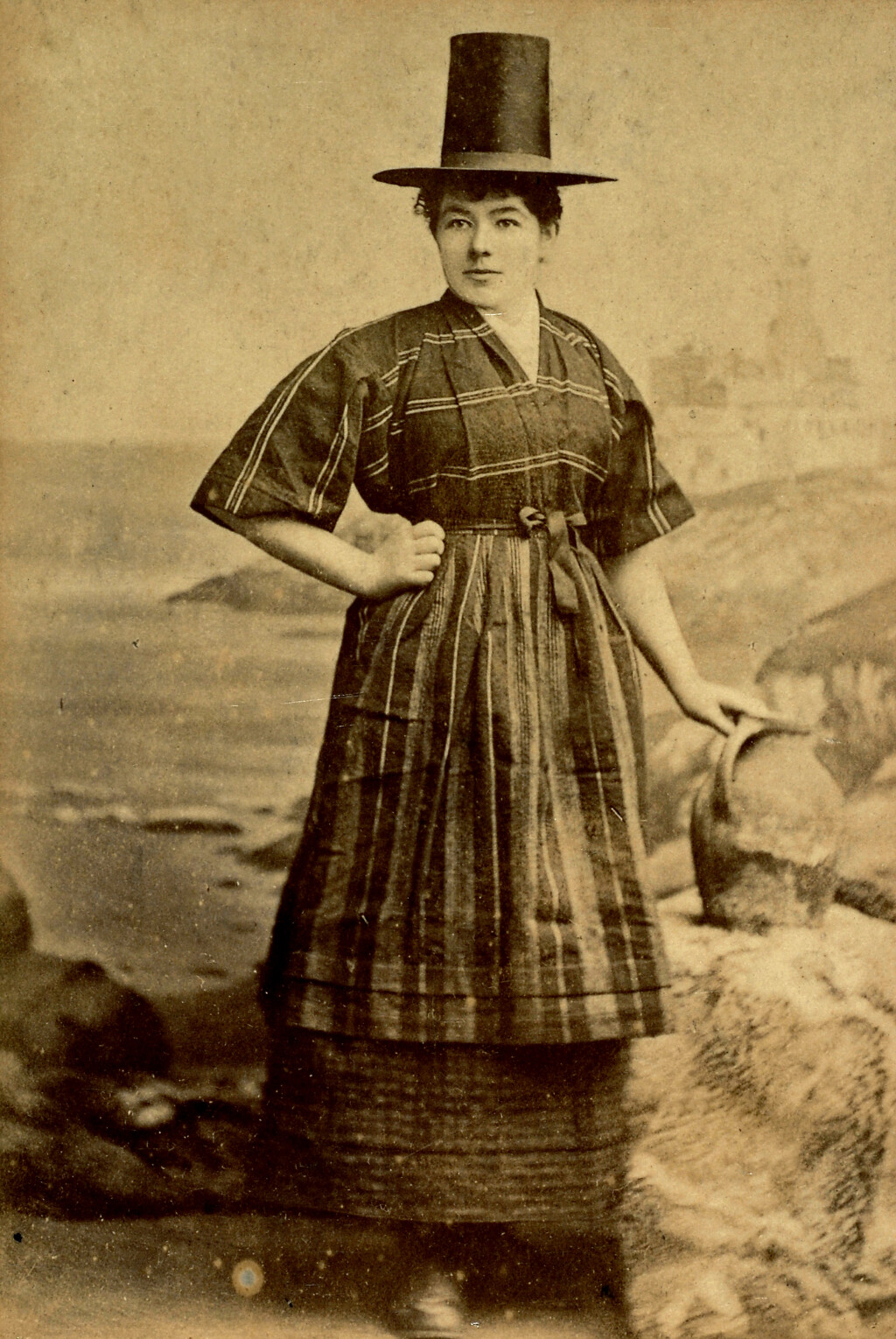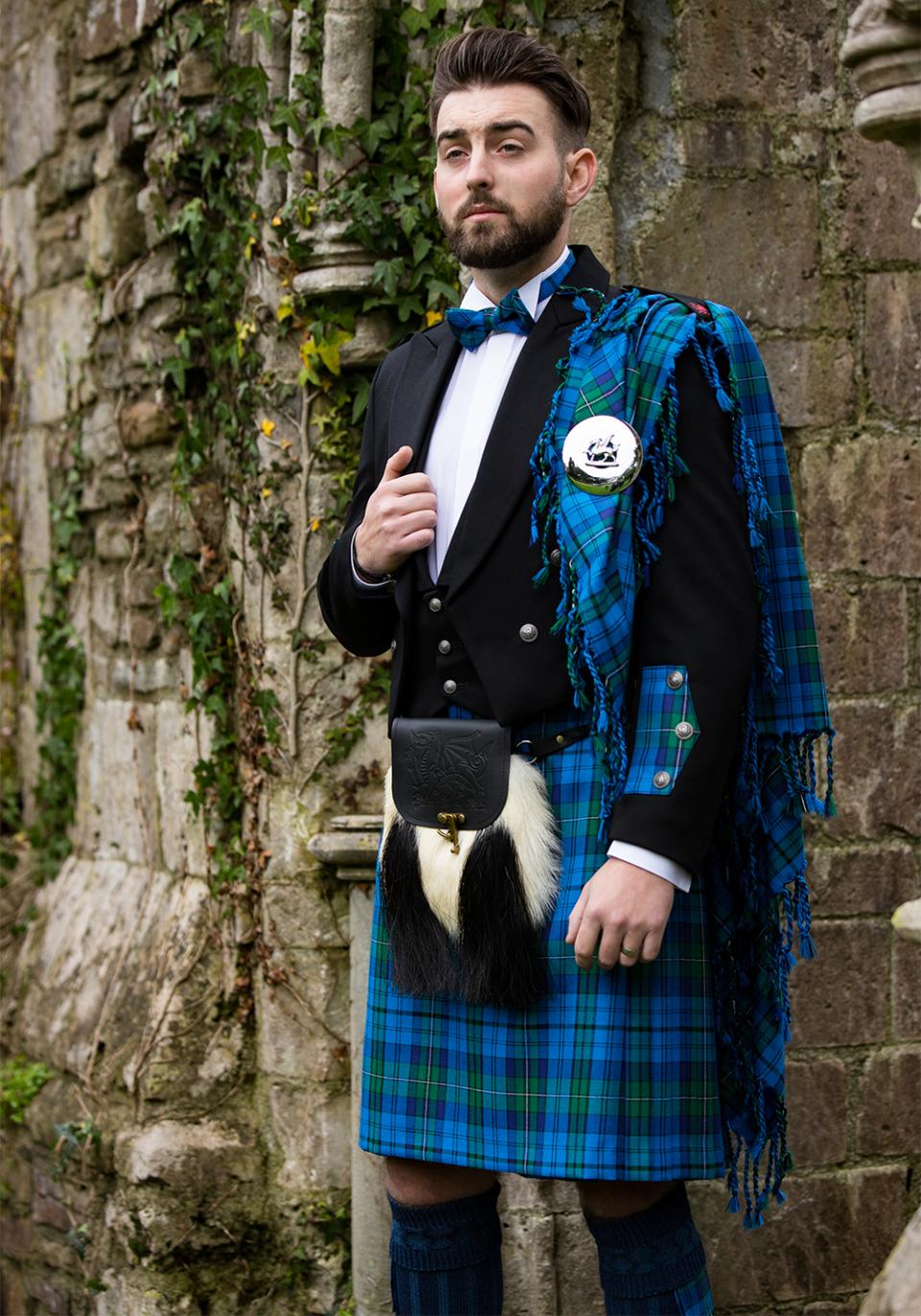
Wales E1 Postcard Welsh National Costume Dress LAdies TAlking 028 National dress, Womens
Figure 1.Five young girls in traditional Welsh dress at Ysgol Gymraeg Treganna, Cardiff in 1998. Image from: Wales online, 25 Feb 2014, 26 fantastic pictures that show St David's Day celebrations in Wales through the years. Available at: https://www.walesonline.co.uk/incoming/gallery/26-fantastic-pictures-show-st-6745527

FolkCostume&Embroidery Costume of Ynys Mon, or Anglesey, and North Cymru or Wales Traditional
The skirt and underskirt Known as 'pais' in Welsh, these were often made of thick flannel with vertical stripes in reds and dark blue or black and white. The apron This was often of natural colours in chequered patterns. The shawl

Clothing / Dillad What are traditional Welsh clothes? clothes, National dress
Wales portal v t e The Welsh traditional costume ( Welsh: Gwisg Gymreig draddodiadol) was worn by rural women in Wales. It was identified as being different from that worn by the rural women of England by many of the English visitors who toured Wales during the late 18th and early 19th centuries.

Wales. Welsh dress, Traditional welsh dress, Stock photo girl
Traditional Welsh dress was worn by women in rural areas of Wales. The distinctive dress was based on a form of bedgown made from wool, of a style dating from the 18th century, worn over a corset. This was teamed with a printed neckerchief, a petticoat, apron and knitted stockings.

FolkCostume Costume of Ynys Mon, or Anglesey, and North Cymru or Wales European costumes
Home About Black hats, petticoats and bedgowns - exploring traditional outfits in Wales View image credits An old postcard showing Welsh women wearing traditional dress - image from Archifau Ynys Mon / Anglesey Archives Welsh national dress

The Tall StovepipeStyle Hat An Indispensable Part of Welsh Women in National Costume From the
10 products St David's Day Girls 3 Piece Welsh Lady Costume from £24.95 Wales Welsh Flag Buttoned Shirt 1 review £19.99 St David's Day Girls, Welsh Lady Dress - in Red 1 review £19.95 St David's Day Women's 3 Piece Welsh Lady Costume 1 review £28.50 Men's Welsh Flag Wales Kilt £19.99 Sold out Wales Welsh Flag Patriotic Waistcoat £19.99 Sold out

Women in traditional Welsh period dress at Llanover Hall, Abergavenny, Wales, UK Stock Photo Alamy
What is a national costume? Historians have to use a variety of different information to piece together what people actually wore every day. The created a national costume from clothing worn by women in the countryside. This image has ensured the survival of many elements of real Welsh dress. Early sources of information

A young woman dressed in traditional welsh costume on St Davids Day Wales UK Stock Photo Alamy
Welsh Traditional Dress (1 - 60 of 65 results) Estimated Arrival Any time Price ($) All Sellers Sort by: Relevancy Scottish Full Dress Seal Skin Celtic Kilt Sporran, Antique Emblem Welsh Dragon Badge, 3 Tassels, Free Chain Strap, Original Leather (19) $40.55 Traditional Welsh Costume (43) $24.86

Pin on Wales
But what's the history behind the traditional Welsh costume? The costume is linked with Augusta Hall, Lady Llanover (also known by her bardic name, 'Gwenynen Gwent'). She was an important patron and sponsor of folk culture in Wales during the nineteenth century, especially with regards to music and dance.
Traditional Mens Welsh Clothing Gay Eat Ass
The popular image of Welsh national dress, of a woman in a red woollen cloak and tall black hat, is one which largely developed during the nineteenth century. It was part of a conscious revival of Welsh culture during a period when traditional values were under threat. The women in these images most likely sold their wares at Swansea Market.

26 fantastic pictures that show St David's Day celebrations in Wales through the years Saint
Wales, Traditional Welsh National Dress Ethel Smith Updated: Oct 4, 2018 Welsh Flag Did you know that there is a National Dress of Wales? If you knew there is a national dress of Wales you will probably recognize the clothing which in some ways reminds me of witches in story books, many years ago.

Welsh National Dress (FAQ) Museum Wales
Welsh girls in traditional costume, 1830. The traditional Welsh costume is a costume once worn by rural women in Wales and is described as different from other traditional costumes around Britain. It included a form of bedgown made from wool and worn over a corset; an item of clothing that survived in Wales for longer than elsewhere in Britain.

Welsh 8 Yard Wool Dress Kilt Wales Tartan Centres
The Dynion Mwyn (Welsh: Y Dynion Mwyn, meaning 'The Fair Men') tradition is said by its adherents to be derived from Welsh and Pictish religious sources as well as Druidic and witchcraft magical practices.. Dynion Mwyn documents claim its priesthood evolved from Welsh Druidism, Pictish witchcraft and Etruscan culture, including in its ancestry Druids, Bards, Ovates, "Faerie Doctors", "Cunning.

Traditional Welsh Girl Fancy Dress Costume with Hat and Leek eBay
You may recognise the image of traditional Welsh costume: a woman in her black, red and white costume and tall black hat, but this has become a stereotypical image, albeit a popular one, that bares little resemblance to the iconic Welsh costume designed by one nineteenth century noblewoman, Augusta Hall (1802-1896).. The Welsh working dress.

Welsh National costume welsh wales Welsh Lady, European Costumes, Saint David's Day, Folk
The popular image of Welsh 'national' dress, of a woman in a red woollen cloak and tall black hat, is one which largely developed during the nineteenth century. It was part of a conscious revival of Welsh culture during a period when traditional values were under threat. Where did the style come from? The costume regarded as national dress

Pin on Costumes
The Welsh traditional costume ( Welsh: Gwisg Gymreig draddodiadol) was worn by rural women in Wales. It was identified as being different from that worn by the rural women of England by many of the English visitors who toured Wales during the late 18th and early 19th centuries. It is very likely that what they wore was a survival of a pan.